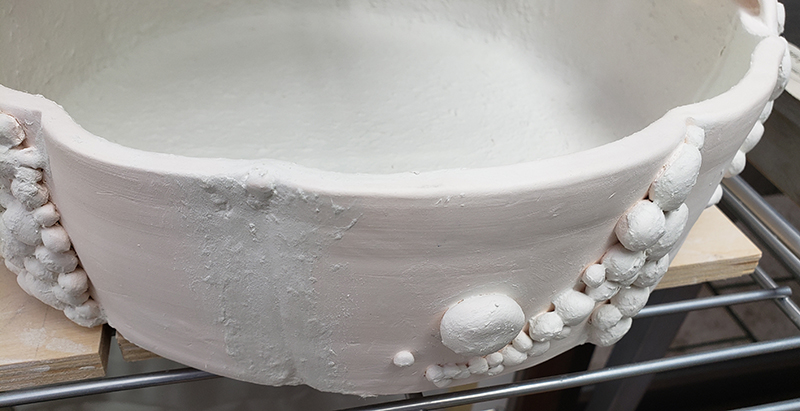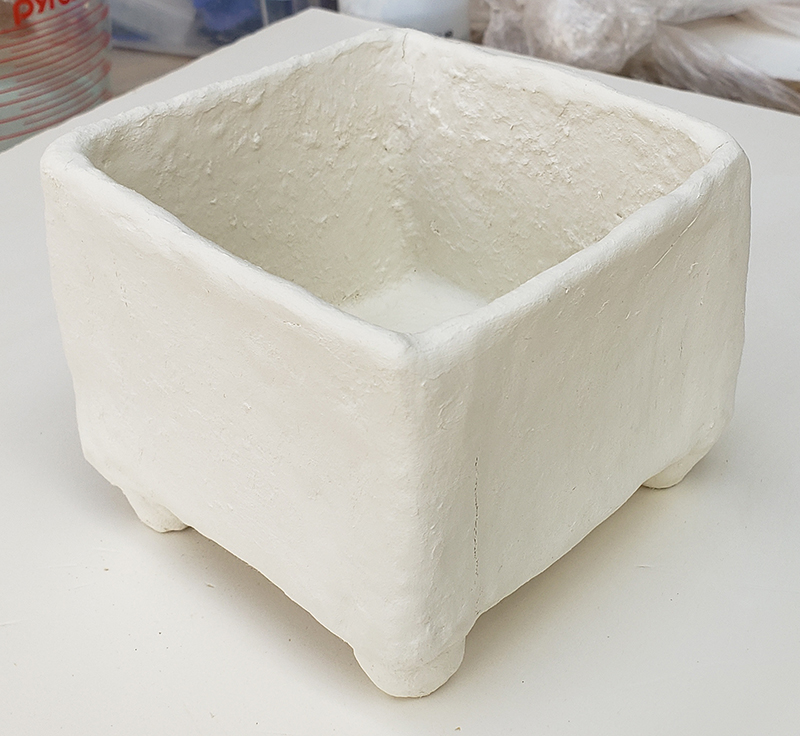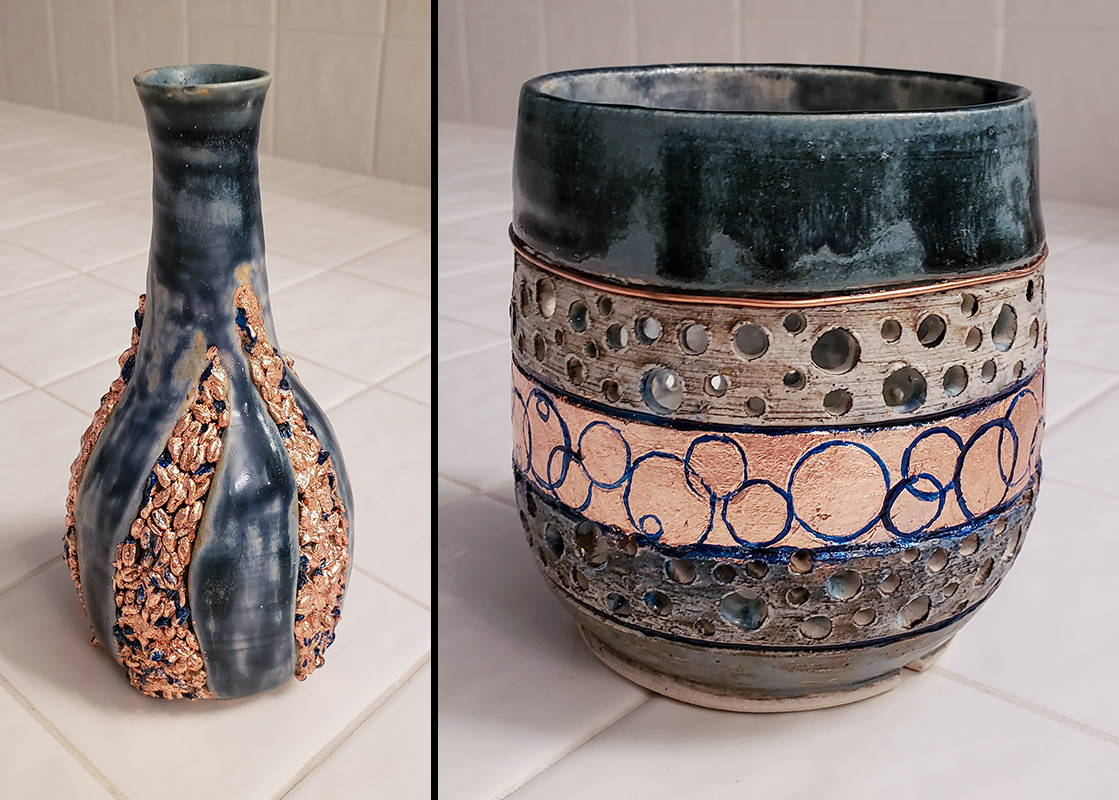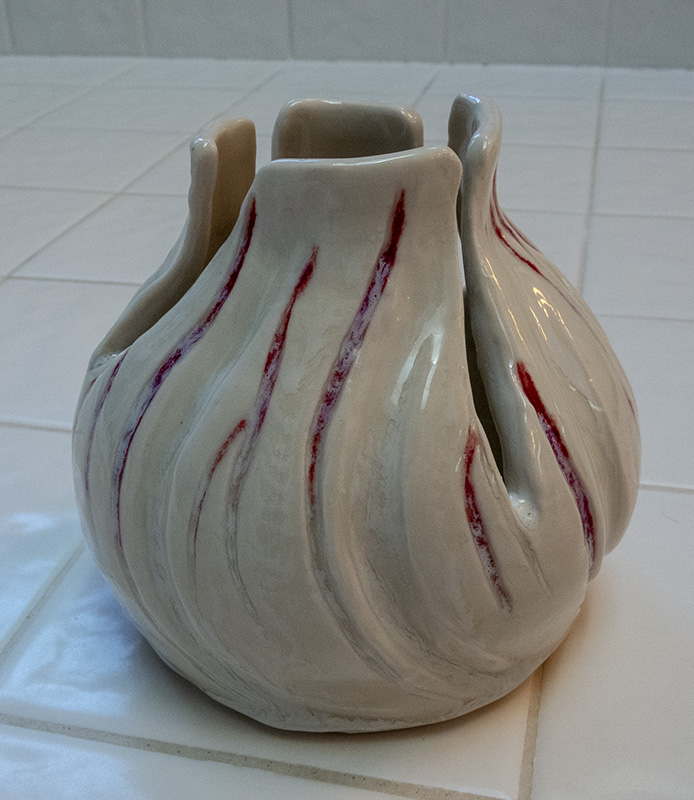
A few years ago, when I was just starting school to study ceramic arts, one of my assignments was to come up with some images of work from other ceramicists that I admired. I found an artist named Jennifer McCurdy who was doing beautiful work with cutout porcelain. I fell in love with her work. And of course, I had to try to try making a cutout piece myself. As a beginner. It fell apart in spectacular fashion of course and I tabled the idea for a few years.
And then a few months ago, Jennifer McCurdy popped up in Clayflicks with a workshop! I signed up immediately and spent an enthralling three hours listening to and watching this talented artist talk about and show how she makes her compelling cutout pieces. Not easy! The entire process ends with turning the piece upside down on a stilt (post) for final firing so that it slumps down with gravity.
Of course I had to try it again, but without the slump firing. I’m not ready for that yet. And I stayed small. I wanted to see if my piece would stand once I took away a good portion of it. It was a bit touch and go there for a while and I had to repair (successfully) a portion of it that separated from the whole, but in the end, I had a not-too-bad cutaway piece that stands 3.5 inches high and 4 inches wide. In one piece, no cracks!
I’m going to make another one, larger next time and with maybe fewer top supports. We’ll see how it goes.












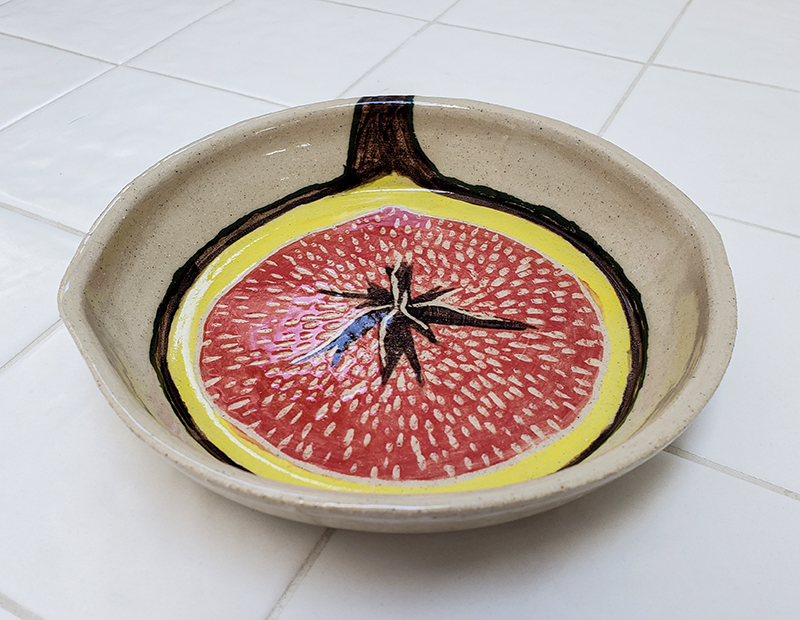
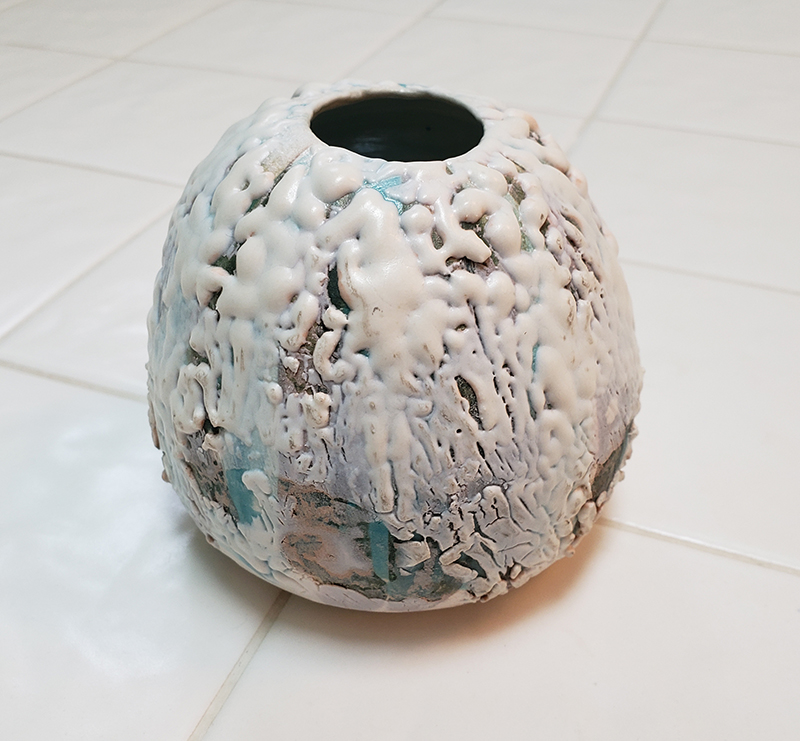
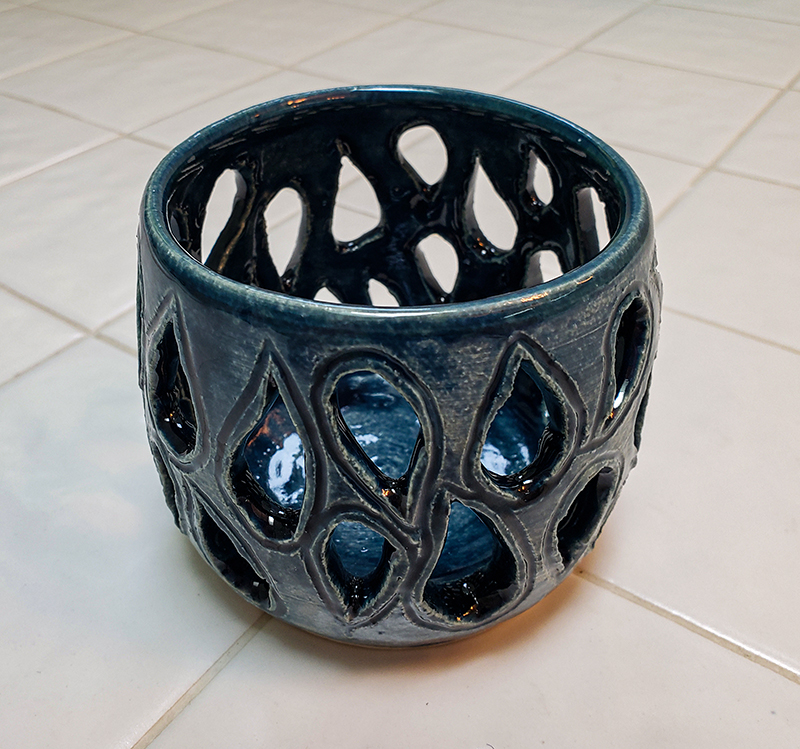
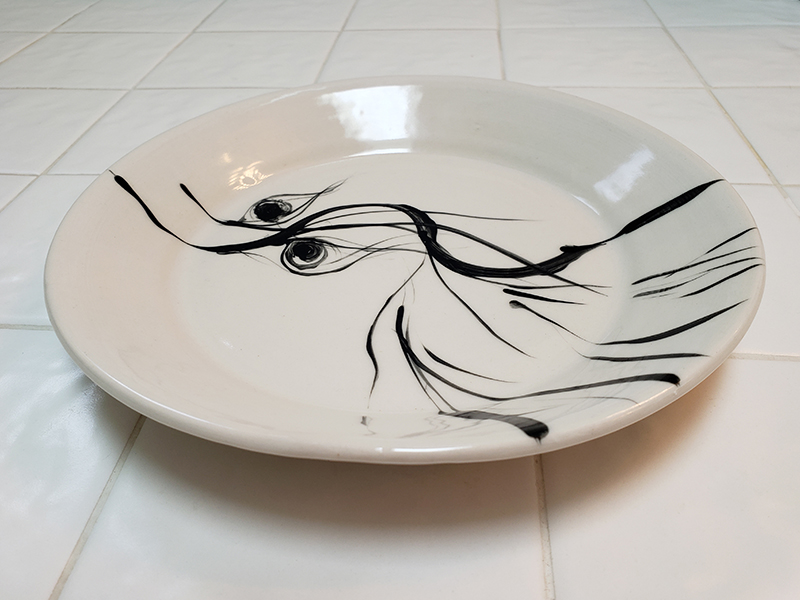


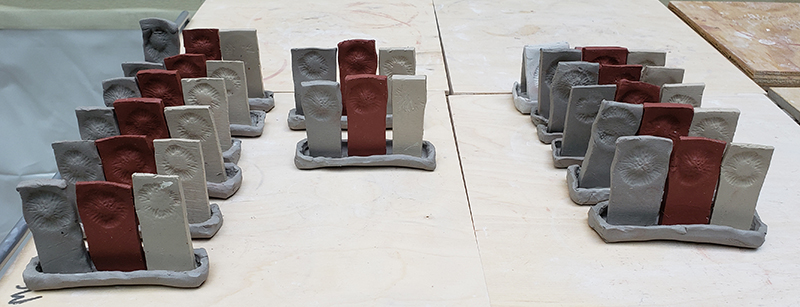
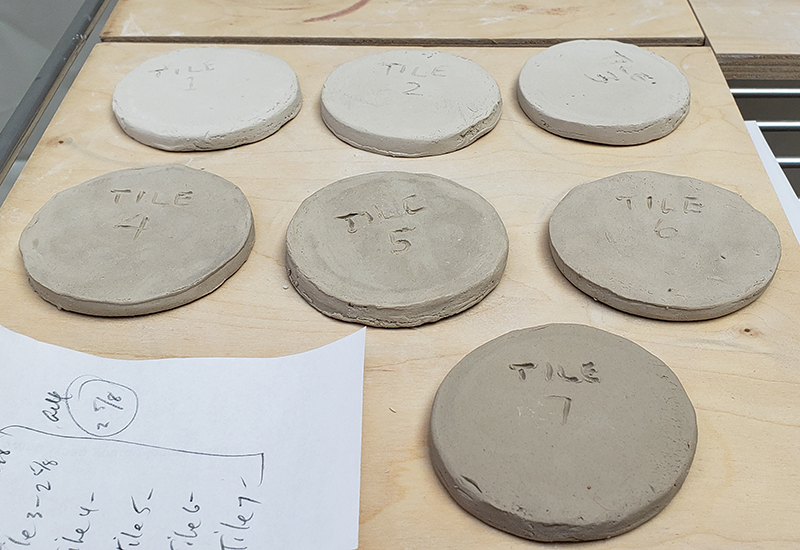 This is Lab 3, for what it’s worth. It has to do with making clay using varying amounts of the same fluxes and measuring for shrinkage. All I can do right now is the wet and green clay shrinkage. Boiling and soaking the fired clay will have to come later.
This is Lab 3, for what it’s worth. It has to do with making clay using varying amounts of the same fluxes and measuring for shrinkage. All I can do right now is the wet and green clay shrinkage. Boiling and soaking the fired clay will have to come later.